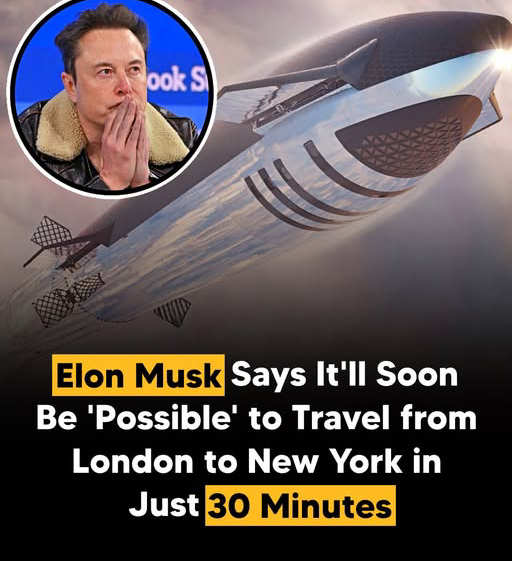SpaceX's Starship Could Revolutionize Travel with Earth-to-Earth Flights Under an Hour

Elon Musk made an interesting revelation: SpaceX's Starship might soon speed travel between big cities faster than ever before, hence possibly lowering flying durations to less than an hour. The audacious assertion followed a video uploaded on X (previously Twitter) on November 6 suggesting that Earth-to--Earth flights for Starship under the Trump administration could be approved by the Federal Aviation Authority (FAA). Musk followed fast to certify that such an accomplishment is now achievable.
With this SpaceX concept, travel might be transformed and trips between cities all across the world faster and more efficient. Although long-distance flights nowadays could last several hours or longer, Starship could significantly cut these periods. A flight from Los Angeles to Toronto, for example, can take as little as 24 minutes, while a journey between London and New York might just call for 30 minutes. For anyone heading from New York to Shanghai, the trip might only last 39 minutes. These are some of the ambitious trip distances SpaceX sees for its enormous spacecraft, Starship.
This is made feasible by Starship's unusual capacity for orbital travel. Starship might launch into space instead of following conventional flight routes around the surface of Earth, therefore avoiding many of the restrictions resulting from air traffic, weather, Earth's curvature. Once in orbit, Starship would be able to almost "jump" from one area of the planet to another, cutting a shortcut across space that greatly shortens the flying time.
Earth-to---Earth travel is not only a pipe dream. In terms of its own right, SpaceX's Starship is a remarkable spacecraft Constructed of robust stainless steel, the Starship is among the biggest and most potent rockets ever constructed at 395 feet tall. For intercity transport, it is revolutionary since it has been built to hold up to 1,000 people. Passengers could travel in a fraction of the time instead of spending hours on a plane, and knowing that the ship could carry many people increased comfort.
Still, there are some obstacles to go before this futuristic transport approach materialises. Getting the approval and assistance of authorities such as the FAA, which supervises air travel and guarantees adherence to safety regulations, would prove one of the toughest difficulties. Musk made hints that permission from the FAA would not be far off, but regulatory procedures, testing, and public acceptability still have a long way to go. For instance, careful evaluation of the spacecraft's capacity to resist the strong G-forces of takeoff and landing will help to guarantee passenger safety.
Notwithstanding these obstacles, Musk's declaration marks a daring move towards redefining transportation's future. Designed to make space travel more accessible and reasonably priced, SpaceX's Starship has already made amazing progress. Apart from space missions, including crewed trips to Mars, Starship has the power to transform world travel as well.
Imagine a time when you could schedule a flight to another continent and arrive in less than an hour. For business, leisure, or even crises, this new kind of travel could provide amazing opportunities for individuals everywhere. And given Musk's aspirational goals, it might not be too far off.
Although daily reality is still far off for the full realisation of Earth-to--Earth travel with Starship, SpaceX's advancement in enabling this ambition is surely fascinating. The next five years could bring major changes to our travel habits; Starship may just be the path to quicker, more effective worldwide mobility.
--
